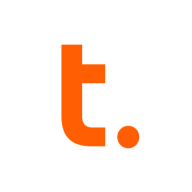

Teradata and MicroStrategy compete in the field of data analytics and business intelligence. Teradata tends to have the upper hand in handling large-scale data processing with enhanced performance and reliability, while MicroStrategy focuses on user-friendly BI capabilities and flexibility.
Features: Teradata excels with its "shared nothing" architecture, high-speed parallel processing, and intelligent workload management. It offers comprehensive security and data warehousing functionalities aimed at optimizing performance and query tuning. MicroStrategy stands out with advanced BI capabilities, offering an easy-to-use interface, visually appealing dashboards, and mobile BI readiness. Its scalable reports and high-performance SQL engine cater well to both technical and non-technical users.
Room for Improvement: Teradata needs to improve in areas like cost efficiency, enhanced cloud integration, and better handling of unstructured data. Its high pricing and need for better cloud-based solutions are often highlighted by users. MicroStrategy could enhance visualization options, simplify self-service capabilities, and reduce the complexity of its tools, particularly in its enterprise manager and mobile functionalities. Flexible pricing models are also needed to address cost concerns.
Ease of Deployment and Customer Service: Teradata offers deployment options across on-premise, hybrid, and multi-cloud environments but faces challenges with scalability and cloud features. While its technical support is mixed, some appreciate its effectiveness, yet others experience delays. Conversely, MicroStrategy offers strong on-premises deployments with growing cloud capabilities but needs a seamless deployment process and faster support response times to improve user experience. Both solutions require enhancements in customer service and deployment performance.
Pricing and ROI: Teradata and MicroStrategy are both premium-priced, reflecting their advanced features. Teradata is appreciated for its high ROI due to performance and large-scale data analytics reliability. MicroStrategy, while costly, is valued for its total cost ownership through its BI platform and licensing flexibility. Despite high initial costs, both promise substantial ROI linked to their advanced features and scalability.
The technical support from Teradata is quite advanced.
Customer support is very good, rated eight out of ten under our essential agreement.
This expansion can occur without incurring downtime or taking systems offline.
Scalability is complex as you need to purchase a license and coordinate with Teradata for additional disk space and CPU.
I find the stability to be almost a ten out of ten.
The workload management and software maturity provide a reliable system.
MicroStrategy could learn from Power BI's user-friendly interface.
Unlike SQL and Oracle, which have in-built replication capabilities, we don't have similar functionality with Teradata.
Initially, it may seem expensive compared to similar cloud databases, however, it offers significant value in performance, stability, and overall output once in use.
Teradata is much more expensive than SQL, which is well-performed and cheaper.
The MicroStrategy interface is not as good as Power BI, especially concerning the user-friendly aspects.
The data mover is valuable over the last two years as it allows us to achieve data replication to our disaster recovery systems.


Company: Founded in 1989, MicroStrategy (Nasdaq: MSTR) is a leading worldwide provider of enterprise software platforms. With direct operations in 26 countries worldwide and approximately 2,000 employees, our mission is to provide enterprise analytics, mobility, and security platforms that are flexible, powerful, scalable and user-friendly. To learn more, visit MicroStrategy online, and follow us on Facebook and Twitter.
Product portfoilio:
MicroStrategy 10 Secure Enterprise™ empowers leading organizations to analyze vast amounts of data and distribute actionable business insight throughout an enterprise through two distinct offerings: MicroStrategy Analytics™ and MicroStrategy Desktop™. MicroStrategy Analytics delivers reports and dashboards, and enables users to conduct ad hoc analysis and share insights anywhere, anytime, via mobile devices or the Web. It also combines the agility and productivity of self-service visual data discovery with the security, scalability, and governance features of enterprise-grade business intelligence. MicroStrategy Desktop is a standalone, on-premise visual data discovery tool designed to enable business users to analyze and understand their data. MicroStrategy Mobile™ enables organizations to rapidly build custom business applications that deliver analytics combined with transactions, multimedia, and custom workflows to mobile devices. MicroStrategy Secure Cloud™ combines all of the enterprise analytics, mobile, and security features in MicroStrategy 10 Secure Enterprise with powerful and scalable data integration, validation, and warehousing services — all delivered in an environment where organizations can deploy transformational analytics applications in minutes.
Usher, MicroStrategy’s breakthrough security solution, is a powerful mobile security platform designed to dematerialize traditional forms of identity verification (such as passwords, tokens, and physical badges) and replace them with a single mobile identity badge that is cryptographically linked to its owner’s smartphone and dynamically linked to an enterprise’s existing identity repositories. Usher works on standard Android and iOS smartphones, and also boasts an Apple Watch™ integration.
Teradata is a scalable data analytics platform designed to meet enterprise demands for large-scale data management and processing, focusing on performance, scalability, and security for complex query executions.
As a leading data warehousing solution, Teradata integrates advanced analytics enabling organizations to derive insights from massive datasets. It supports high-volume data workloads with its architecture optimized for analytical queries. Users benefit from its robust scalability, allowing seamless expansion as data grows. Teradata's SQL engine is compatible with a wide range of data types, ensuring flexibility in data analysis. With advanced security measures, it protects sensitive data across various environments, providing peace of mind to users handling critical information.
What are the most important features of Teradata?Teradata is widely used in industries like finance, telecommunications, and healthcare, where data-driven decisions are critical. Companies leverage its robust analytics capabilities to enhance customer experiences, streamline operations, and ensure compliance with regulatory requirements. In these sectors, quick access to data insights can significantly impact competitive advantage.
We monitor all BI (Business Intelligence) Tools reviews to prevent fraudulent reviews and keep review quality high. We do not post reviews by company employees or direct competitors. We validate each review for authenticity via cross-reference with LinkedIn, and personal follow-up with the reviewer when necessary.